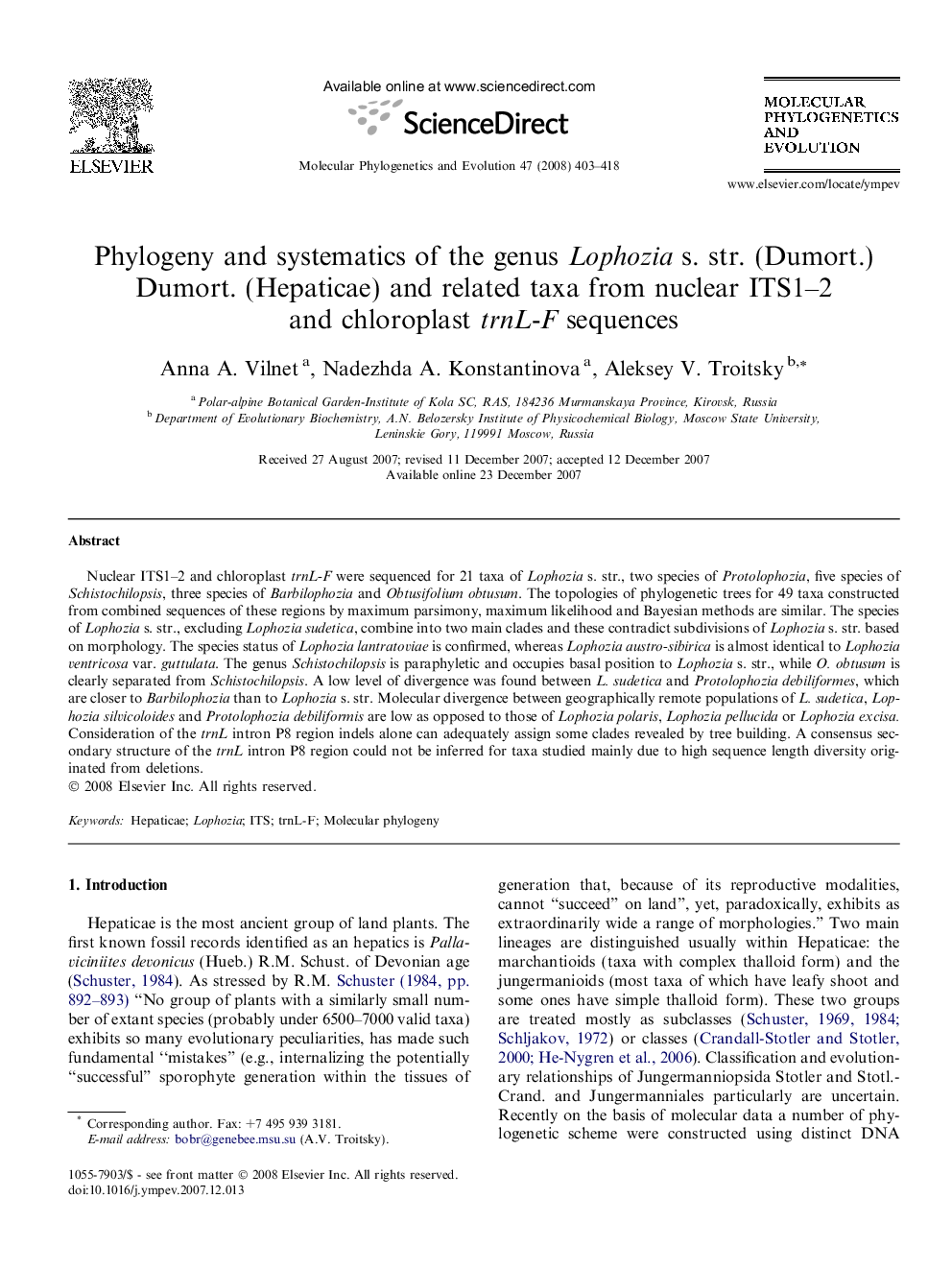| Article ID | Journal | Published Year | Pages | File Type |
|---|---|---|---|---|
| 2835254 | Molecular Phylogenetics and Evolution | 2008 | 16 Pages |
Nuclear ITS1–2 and chloroplast trnL-F were sequenced for 21 taxa of Lophozia s. str., two species of Protolophozia, five species of Schistochilopsis, three species of Barbilophozia and Obtusifolium obtusum. The topologies of phylogenetic trees for 49 taxa constructed from combined sequences of these regions by maximum parsimony, maximum likelihood and Bayesian methods are similar. The species of Lophozia s. str., excluding Lophozia sudetica, combine into two main clades and these contradict subdivisions of Lophozia s. str. based on morphology. The species status of Lophozia lantratoviae is confirmed, whereas Lophozia austro-sibirica is almost identical to Lophozia ventricosa var. guttulata. The genus Schistochilopsis is paraphyletic and occupies basal position to Lophozia s. str., while O. obtusum is clearly separated from Schistochilopsis. A low level of divergence was found between L. sudetica and Protolophozia debiliformes, which are closer to Barbilophozia than to Lophozia s. str. Molecular divergence between geographically remote populations of L. sudetica, Lophozia silvicoloides and Protolophozia debiliformis are low as opposed to those of Lophozia polaris, Lophozia pellucida or Lophozia excisa. Consideration of the trnL intron P8 region indels alone can adequately assign some clades revealed by tree building. A consensus secondary structure of the trnL intron P8 region could not be inferred for taxa studied mainly due to high sequence length diversity originated from deletions.
